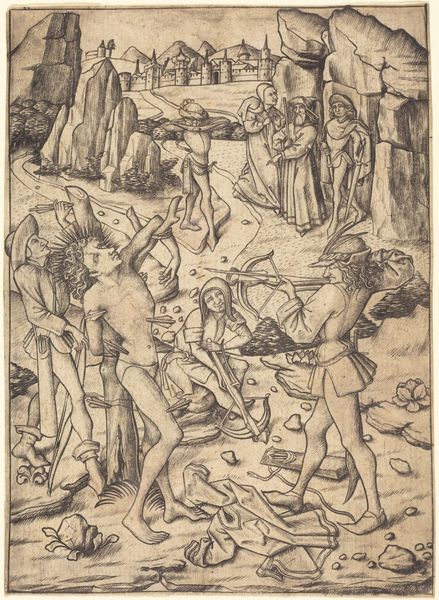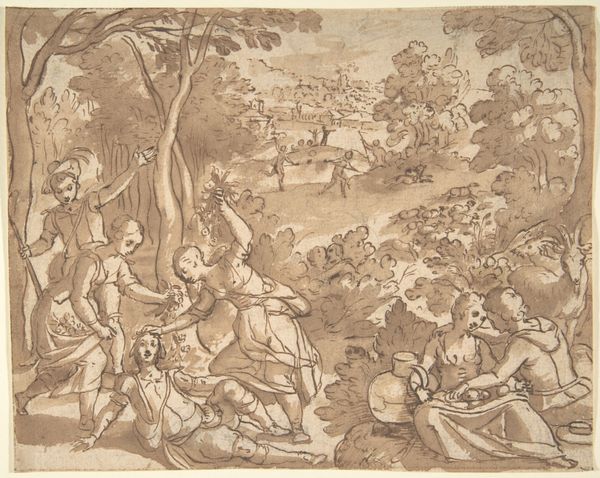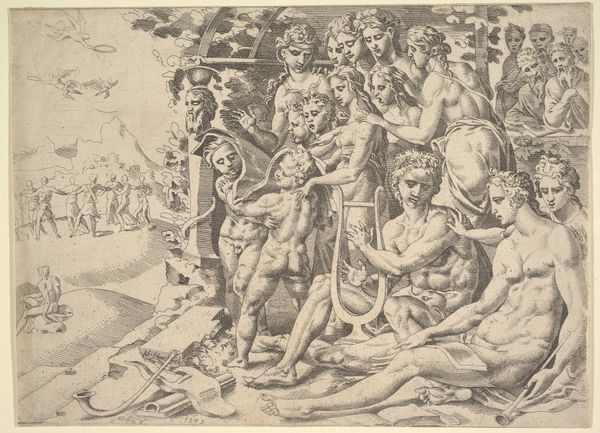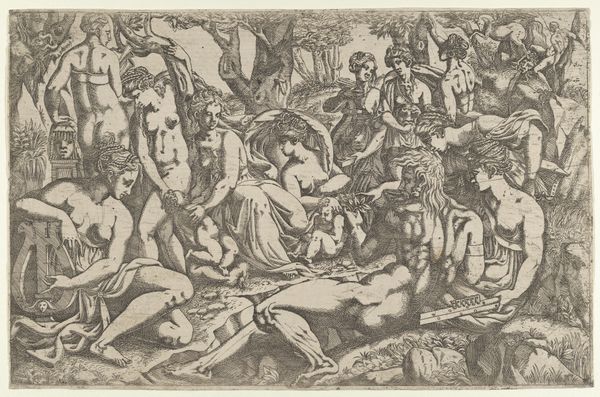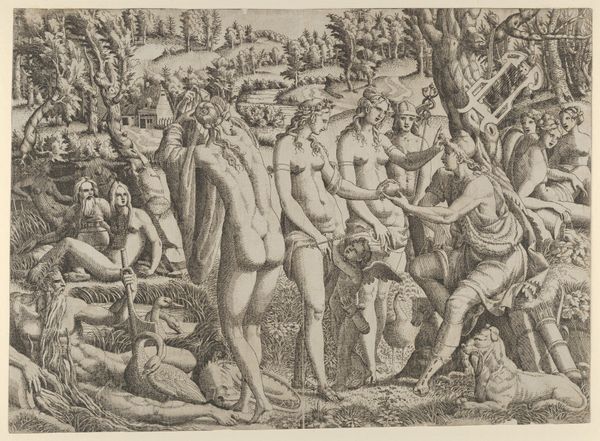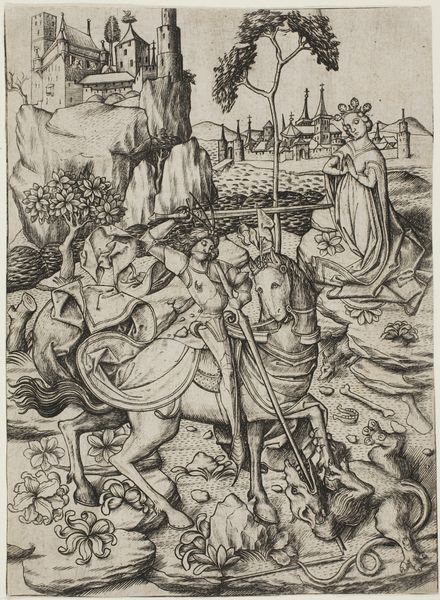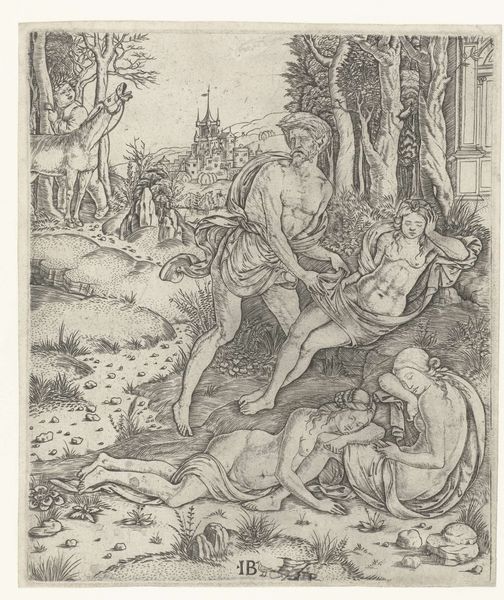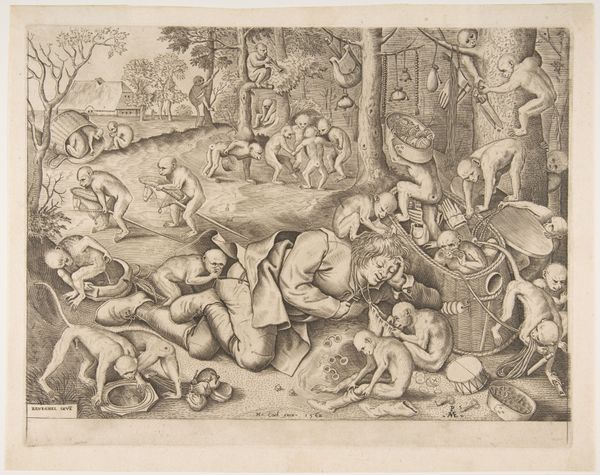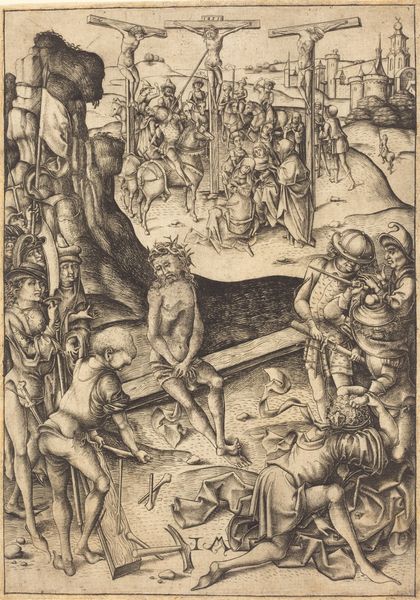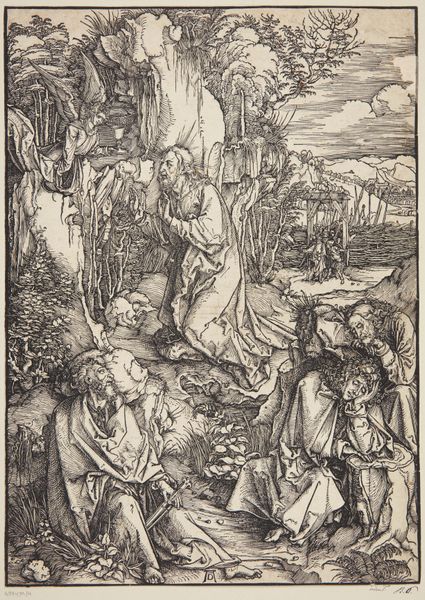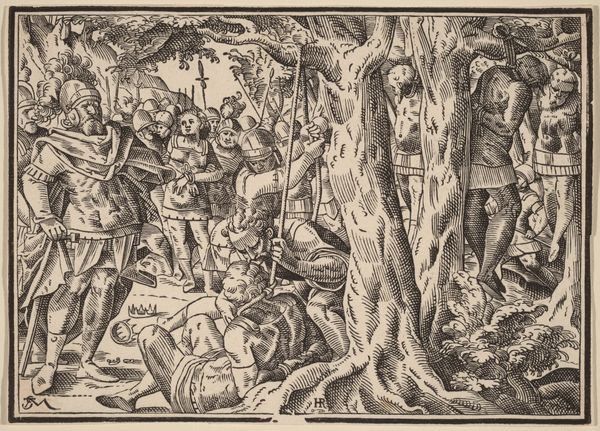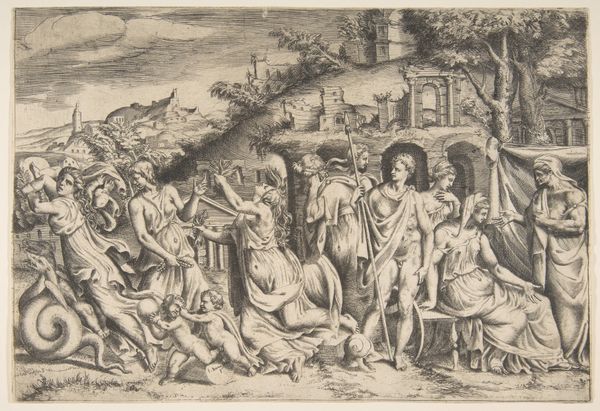
drawing, print, paper, ink, engraving
#
drawing
#
ink drawing
#
medieval
#
narrative-art
#
pen drawing
# print
#
figuration
#
paper
#
ink
#
history-painting
#
italian-renaissance
#
engraving
Dimensions: 130 × 186 mm (plate); 134 × 191 mm (sheet)
Copyright: Public Domain
Editor: This is Master ES’s "The Martyrdom of Saint Sebastian," created sometime between 1450 and 1460. It's an ink engraving printed on paper. The scene is stark. What strikes me is the contrast between the brutality of the act and the seemingly serene landscape. What do you see in this piece, beyond the immediate depiction of violence? Curator: Beyond the surface narrative, I see a complex interplay of power, vulnerability, and resistance. Sebastian, a figure representing both strength and suffering, is a focal point of interrogation around the societal construction of masculinity. Consider, who is afforded the right to inflict violence, and what does that say about the social hierarchy depicted here? The seemingly serene landscape, as you noted, further underscores the normalcy with which such acts of violence were, and arguably still are, carried out. How does this interplay resonate within current dialogues about power structures? Editor: I hadn’t considered the serenity as a form of complicity. It’s unsettling to think about it in terms of current dialogues about power. The men with the bows look so... ordinary. Curator: Exactly. And their ordinariness is key. It speaks volumes about how easily individuals can become complicit, even active participants, in systems of oppression. The normalization of violence against marginalized bodies, then and now, is a recurring theme in art and society. This is, in part, why reflecting on historical narratives through a contemporary lens is not an act of mere historical documentation, but a crucial tool for social awareness. Who decides what’s normal, what’s right, and who benefits? Editor: That definitely shifts my perspective. I initially saw a historical religious scene, but now I see it as a commentary that sadly still resonates today. Curator: Indeed, art acts as a mirror, reflecting both our past and present, urging us to critically examine our roles within the power dynamics that shape our world.
Comments
No comments
Be the first to comment and join the conversation on the ultimate creative platform.
